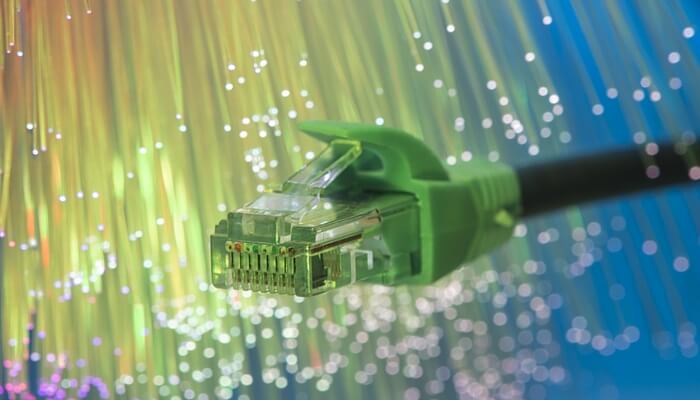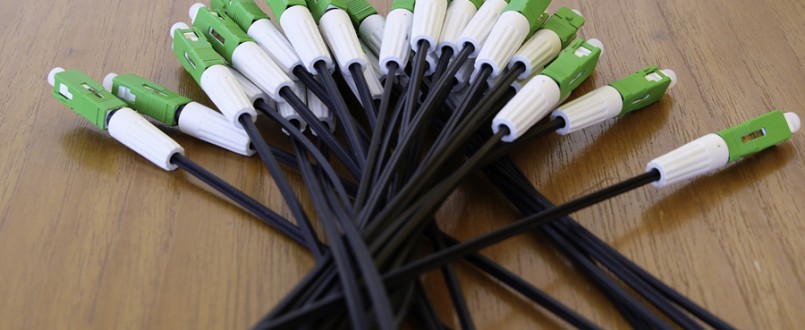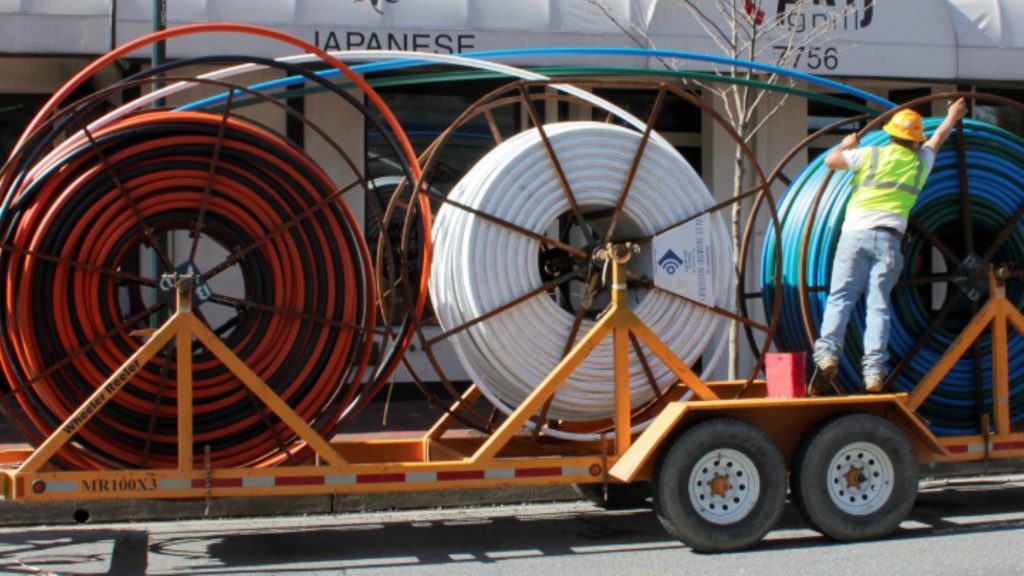
Fiber internet is not a new technology. It has been in made commercially available for more than a decade now. However, it’s recently enjoying the limelight as efforts to expand fiber networks have become more noticeable. Google Fiber, arguably, also plays some role in this renewed interest in fiber internet. But what really is fiber internet? How does it affect the consumer broadband market?
What Is Fiber Internet?

How Fiber-Optic Internet Works
As the name implies, fiber internet refers to internet access through fiber optic communication. It involves the use of an optical transmitter for converting electrical signals into optical signals that can then be sent into the optical fiber. This optical fiber is inside a cable which contains bundles of several optical fibers routed through underground conduits and buildings. There are also different kinds of amplifiers used to make sure that the signals are sent to where they should be transmitted. Lastly, an optical receiver is needed to obtain the optical signals as electrical signals. It’s a complex process that enables fast data transmissions, hence faster internet connectivity.
Fiber internet services at present offer plans with speeds as high as 10 Gbps. This is not the fastest theoretical maximum speed fiber internet can support but it’s certainly significantly faster than the speeds offered by most other types of internet services. These speeds can only be rivaled by 5G connections but since 5G is a new technology, it will mean higher costs.
Advantages of Fiber Internet

11 Huge Business Benefits of Fiber Internet Connectivity
Fiber internet offers several advantages aside from the speed. For one, it is more reliable as compared to copper connections. This is because optic fibers are not prone to electrical noise, are more flexible, and have higher tensile strength. Fiber lines are not susceptible to bad weather conditions. Also, the cables used in fiber connections can be longer than copper ones, and these cables have considerably higher capacity. The longest recommended length for copper lines is only around 100 meters while for fiber internet, it is around 2,000 meters. The capacity of copper cables is more than 4x compared to copper. Moreover, since fiber optics are dielectric, they don’t pose spark hazards.
In short, fiber internet provides faster and more reliable connections. It can be considered the gold standard for wired high speed internet. It provides a multitude of advantages. Deployments are steadily growing at present so it will soon be available to more homes.
Fiber Impact on the Broadband Consumer Market

The Benefits of Fiber to the Home Broadband Connections
a) Increased Broadband Provider Switching – Before delving deeper into details – the most immediate impact of the introduction of fiber internet services is the tendency of consumers to switch to a new ISP. One good example of this is what has been happening in Kiwi. As observed in the New Zealand broadband comparison website Broadband Compare, more Kiwis have been doing searches for a new broadband provider since they were introduced to fiber internet.
Broadband Compare attributes this increase in switching to a new provider in part to the continuing rollout of fiber networks across New Zealand, which is further strengthened by unlimited & ultra-fast broadband deals as advertised by the big players in the scene.
Accordingly, more than ⅔ of those who have been comparing internet plans on Broadband Compare have been looking for fiber or VDSL services. Consumers are seeking ultrafast broadband connections and fiber internet, for now, exists as the top choice.
b) Dawning of the Gigabit Internet Age – Fiber internet ushers in the dawn of the gigabit internet age. This technology is the answer to bandwidth hungry home users of the internet. It stirs greater interest for the home broadband market that has long been plagued by complaints over inconsistent speeds, intermittent connections, and services that easily get affected by changes in the weather.
Fiber internet is not necessarily a disruptive service. It’s not going to make home broadband customers suddenly decide to have their current lines cut to immediately go for a fiber connection. After all, its availability is still not as wide as that of copper line DSL. However, because it offers a more reliable service with faster speeds, it is bound to become the first option for most homes if it is available in an area. Going for a more reliable and faster connection is a no-brainer, especially for homes with students and for those who maintain home-based businesses.
One important impact of fiber internet manifests in the pricing of internet services per Mbps. Fiber connections in the not so distant past have been expensive. As more ISPs offer fiber services, the prices are expected to become more competitive or more affordable. Their introduction to an area also lowers the prices of slower internet access options. There’s competition not just among fiber services from different companies but also with older broadband services.
Also worth noting is the ability of fiber internet connections to increase property value. A study conducted by the Fiber to the Home Council Americas found that fiber optic broadband increases the value of multi-family homes in the United States and Canada. This is not directly about the home broadband market but it reveals how fiber internet goes beyond internet connectivity. It shows how home buyers tend to give importance to having fiber internet access at home and can somewhat be reflective of the demand for fiber services.

Gigabit Internet Connections Make Property Values Rise
On the other hand, the faster speeds of fiber connections, tend to make internet users consume more data. There has been no recent study that would solidly support this idea (specifically when it comes to recent fiber internet use). However, a 2015 study by Princeton University Ph.D. student Sarthak Grover and postdoc Roya Ensafi appears to affirm the idea that internet users are likely to use more data as they experience improved speeds. This increased data consumption is particularly noticeable in multimedia content purchases. It can lead to increases in the sales of video-on-demand or streaming services, music, software/apps, and gaming-related products.
In summary, the introduction of fiber internet is making broadband consumers use more data and tends to increase the instances of consumers switching to new ISPs as they search for faster services. The availability of fiber internet also makes internet service pricing more competitive on a per Mbps basis. Moreover, it doesn’t hurt that fiber internet connections appear to have a positive impact on home value.




